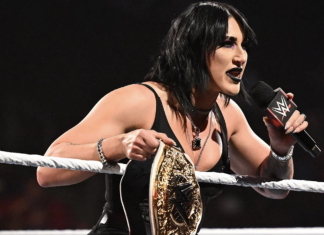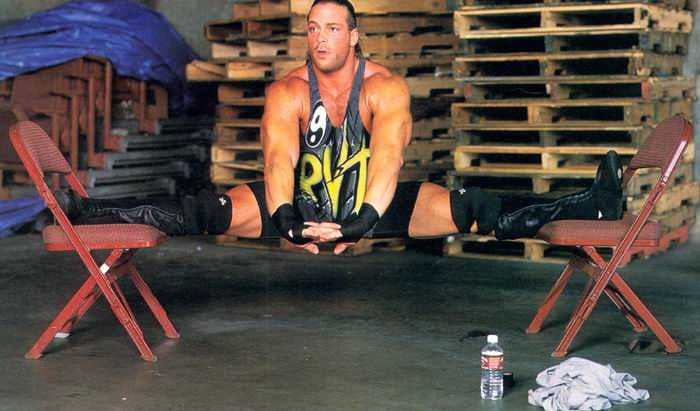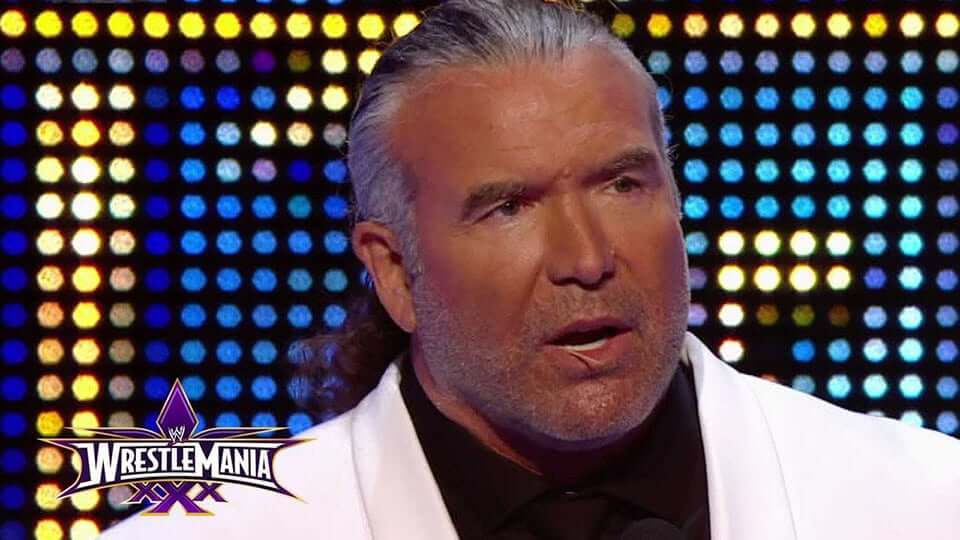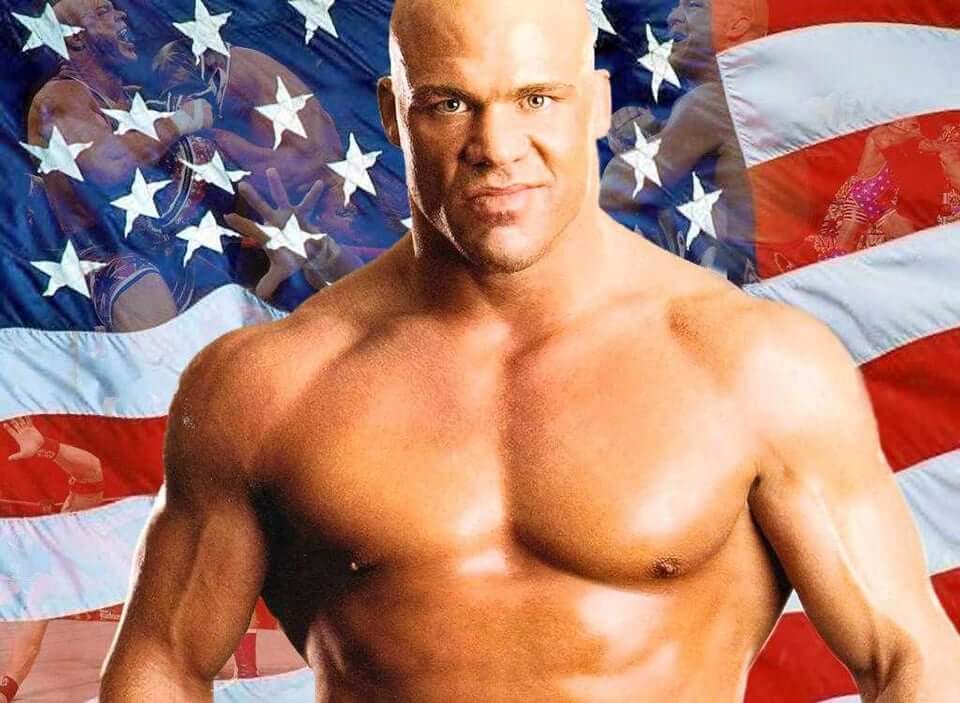Whenever I write a recap of the best recent podcast episodes for Still Real To Us, odds are that an episode of the MLW Network’s Something To Wrestle With Bruce Prichard will get a mention. This week’s episode — hosted as always by Prichard and Conrad Thompson — is no different, perhaps one of the show’s best episodes altogether. The focus of it is Vince Russo, one of the creative forces behind various eras of the WWF, WCW and TNA.
Vince Russo has reinvented himself as a podcaster and attempted to get his own wrestling company off the ground in recent times. He also pops up frequently on other wrestling-related podcasts and is very active on social media.
As one of the more divisive people within the history of the wrestling business, a lot of wrestling podcasters have been especially critical of Russo in recent weeks, including Eric Bischoff and Jim Cornette. On this episode of Something To Wrestle, Prichard and Thompson revisit Russo’s full history with WWF/E, including the good, the bad and the ugly.
Keeping things fair, the primary source used for the episode’s narrative is Vince Russo’s autobiography, Forgiven: One Man’s Journey From Self-Glorification To Satisfaction, rather than the Dave Meltzer newsletters that Thompson usually favors. In other words, Russo’s own words — circa 2005 — are the primary source, rather than the “rumors and innuendo” that often irk Prichard.
Here are 10 of the things that we the listeners learn from this episode of Something To Wrestle , thanks to Mr. Prichard:
- Black Jack Lanza produced a lot of the local promos for WWF in the mid-1990s. In Russo’s took, he takes credit for writing the promos of top talent (e.g. Bret Hart, Kevin Nash), but he was mainly tasked with writing such for lower-card talent (e.g. The Smoking Gunns).
- Bruce Prichard considered Russo to be a friend. Russo’s book largely calls out Prichard as a stooge, yet Prichard recalls that the two of them hung out. This goes against Russo’s narrative of being a lone wolf while writing for WWF.
- In Forgiven, Russo correlates his promotion to Prichard being shifted off the creative team. Prichard explains how his shift to the Talent Relations department primarily had to do with staffing needs, tying such in with Jim Ross’ contract status.
- Russo credits the creation of the Chainsaw Charlie character, as portrayed by Terry Funk, to Vince McMahon. Prichard explains how and why Funk created this character, naming who it was a tribute to.
- It is stated by Russo in Forgiven that he got Cornette fired from WWF creative by putting McMahon into a “it’s him or me” scenario. Prichard explained why this is incorrect.
- Russo takes credit for the creative of the DX angle in which Triple H and crew invaded a WCW event. Prichard told the whole story, which says otherwise, as he was the on-site producer of the segment.
- According to Russo in his memoir, the idea of The Rock referring to himself in the third person was his. Not so, said Prichard, who correlated this to a story that Jim Ross has told relating to Deion Sanders. A few other Rock-related factoids were further clarified by Prichard.
- In Forgiven, Russo talks up how McMahon failed to see the genius of the Austin 3:16 concept, which would be instrumental in making McMahon a billionaire. Also not so, per Prichard, who offers more details on that.
- Another character who Russo talks up playing a big role in the development of in Forgiven is Goldust. Prichard does not fully discredit this, but does explain how multiple people contributed to what Goldust evolved into.
- Bruce Prichard does an incredible impression of Terry Funk. Maybe the best I have heard yet.
And folks, these are just highlights from the first half of Episode 51 of Something To Wrestle With Bruce Prichard. So you will have to tune in if you want to learn more about the hyjinx of one Vincent Russo.

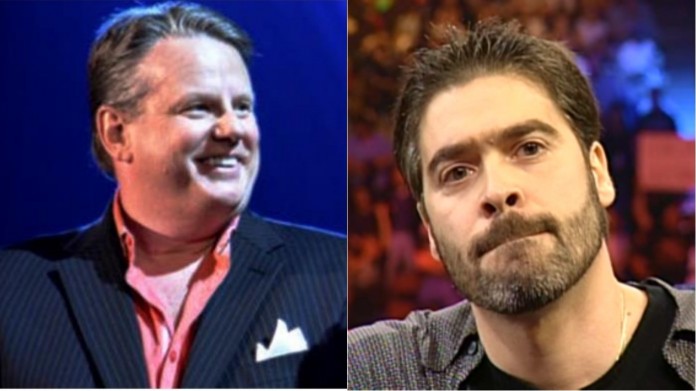
![Brandi Rhodes On What Makes Her Excited In AEW’s Women’s Division [Exclusive Interview] brandi rhodes](https://stillrealtous.com/wp-content/uploads/2019/10/Brandi-Rhodes-Talks-About-Womens-Division-In-AEW-218x150.jpg)
![Jon Moxley Says He’s, “Not Going To Be In The Business Of Disappointing Fans Anymore” [Exclusive Interview] Jon Moxley](https://stillrealtous.com/wp-content/uploads/2019/10/Jon-Moxley-Opens-Up-At-New-York-Comic-Con-218x150.jpg)
![Chris Jericho Says AEW’s Existence Is Changing The Industry At NYCC [Exclusive Interview] Chris Jericho](https://stillrealtous.com/wp-content/uploads/2019/10/Chris-Jericho-Talks-To-Still-Real-To-Us-At-Comic-Con-218x150.jpg)
